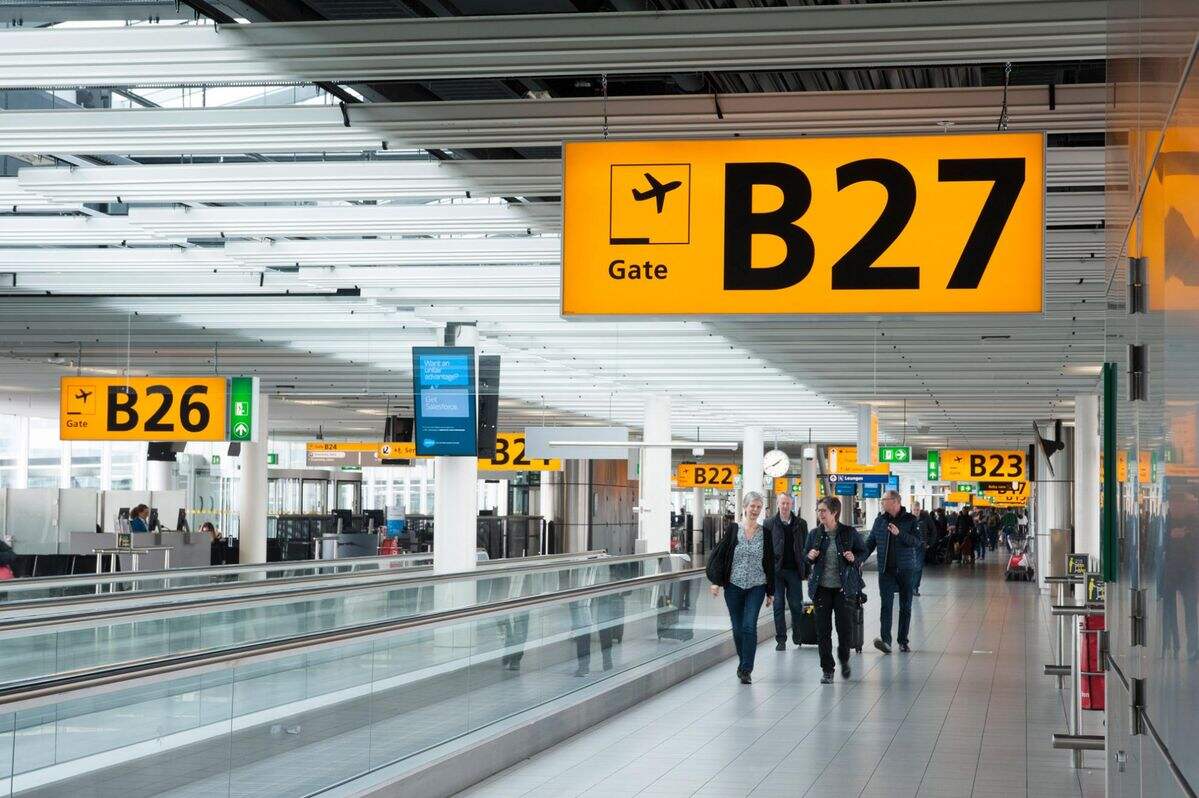Sa saol gnóthach atá ann inniu, tá aerfoirt i gcónaí ag lorg bealaí chun eitilt a dhéanamh níos éasca agus níos gasta do gach duine. Ceann de na feabhsuithe is fearr is féidir leo a dhéanamh ná a gcuid comharthaí a uasghrádú. Mínítear san alt seo cén fáth ar cheart do aerfoirt infheistíocht a dhéanamh i gcomharthaíocht dhigiteach agus fisiciúil den scoth, agus conas nach bhfuil na córais seo ag treoir paisinéirí ach freisin íomhá an aerfoirt a threisiú agus taistealaithe a choinneáil sábháilte.
Déanann comharthaí bealach a fháil níos éasca
Is labyrinths ollmhóra iad aerfoirt a d'fhéadfadh a bheith mearbhall fiú don eitleán is taithí, go háirithe daoine a athraíonn eitleáin nó iad siúd atá ar a gcéad turas. Tá comharthaíocht mhaith ríthábhachtach. Cabhraíonn comharthaí soiléire agus cliste, scáileáin idirghníomhacha, agus treoracha simplí PDA le taistealaithe a fháil amach cá háit le dul i gceann amháin. Nuair a bhíonn comharthaí éasca le leanúint, leanann na coisithe ag bogadh, bíonn na línte níos giorra, agus téann eitleáin ar am. Mar sin, ní amháin go ndéanann infheistíocht i gcomharthaí níos fearr turais níos taitneamhacha; cabhraíonn sé freisin le foirne, cuireann sé borradh ar ghnó, agus coinníonn sé aerfoirt ar an sceideal.
Taithí Paisinéirí a fheabhsú
Is gá do gach aerfort rathúil gach taistealaí a chur ar a suaimhneas, agus tá ról mór ag comharthaíocht. Coinníonn comharthaí iontacha, go háirithe na cinn digiteacha, lucht eitilte ar an eolas faoi amanna eitilte, malartuithe geataí, agus príomh-fhaisnéise díreach nuair is gá dóibh a fháil amach. Tá nuashonruithe fíor-ama ina athrú cluiche chun cosc a chur ar na nerve-wracking, dashes nóiméad deireanach go dtí an geata. Seachas faisnéis phraiticiúil, déanann comharthaí a dearadh go cúramach athscríobh ar bhranda an aerfoirt, rud a thugann an-deas "féach ar ais" do dhaoine atá ag teacht ar an aerfort agus a choinníonn siad i gcuimhne fada tar éis dóibh teacht ar talún. Nuair a thugann lucht eitilte faoi deara go gcuireann an críochfort an-aire ar a n-aird, is dócha go roghnóidh siad an aerfort céanna dá dtúr eile.
Sábháilteacht agus Comhlíonadh
Is é gach duine a choinneáil sábháilte an sprioc uimhir amháin do aon aerfort, agus tá comharthaíocht den scoth mar phríomhchuid den mhisean sin. Tá comharthaí a chomhlíonann rialacha sábháilteachta chun treoir a thabhairt do thaistealaithe agus do fhoireann le linn oibríochtaí laethúla agus, níos tábhachtaí fós, le linn éigeandála. Déanann comharthaí geal chun imeacht, treoracha sábháilteachta soiléire, agus rabhaidh riosca atá le feiceáil an slua a choinneáil ag gluaiseacht sa treo ceart agus laghdaíonn sé an seans go mbeidh mearbhall ann. Cinntíonn ábhair inbhuanaithe, atá in aghaidh an aimsire go bhfanann na comharthaí soiléir agus éifeachtach, agus go bhfuil an iontaofacht sin ríthábhachtach chun caighdeáin sábháilteachta a chomhlíonadh gach lá.
Cén fáth go bhfuil comharthaí digiteacha luachmhar
D'fhéadfadh aerfort a bheith ag dúshlán ar dtús nuair a bhíonn cuma costasach ar chóras comhartha digiteach, ach insíonn an coigiltis a nochtann sé thar am scéal difriúil. Ligeann taispeántais digiteacha nua do thermálanna sonraí eitilte, slándála nó geataí a athrú ó ríomhairení gá duine a sheoladh chun sean-fhiníl a scagadh agus píosa nua a shuiteáil. Goodbye, costais oibre-fráma miotail agus costais frith- mar íocaíocht ró-uair. Idir an dá linn, is féidir le boird digiteacha a bheith ina réadmhaoine ad-real-earraí a dhíolann stiúrthóirí aerfoirt do mhiondíoltóirí, áit bia, nó seomraí suí. Íocann an bord an tábla praghais agus ansin níos mó.
Cá bhfuil taispeántais aerfoirt ag dul
Leanann an teicneolaíocht ag bogadh, agus ní bheidh aerfoirt ag dul i dteannta ach ag rith ar aghaidh. Tá feidhmchláir aerfoirt creepy cosúil le treoracha treoraithe réaltachta méadaithe agus cíoscaí scáileáin taibhiúla a léann ticéad taistealaí agus a threoraíonn í chuig an bpointe seiceála slándála is gaire ag fás. Ina theannta sin, baineann braiteoirí ar bord sonraí úsáideacha le chéile maidir le cá bhfuil stadanna tráchta cois, cén comharthaí a léitear is mó, agus cén uair a bhíonn an t-am is mó. Ligeann gach rud a thuigeann aerfoirt oiriúnú go géar. I gceann trí bliana ó anois, beidh na taispeántais atá á luchtaint i gcríocháin i bhfad níos digiteacha, níos mó faoi thiomáint sonraí, agus dírithe ar léasair chun turas aon thaistealaithe a dhéanamh, ón mbord go dtí an geata, níos seamless.
Chun rudaí a bhailiú, ní mór do aerfoirt díriú i ndáiríre ar a gcuid comharthaí a uasghrádú go córais den chéad scoth. Ní amháin go ndéanann an chéim seo é níos éasca do thaistealóirí a mbealach a aimsiú ach déanann sé a thuras níos suaimhneach, coinníonn sé gach duine níos sábháilte, agus úsáideann sé leas as teicneolaíocht nach bhrisfidh an banc. Le dul chun cinn na n-imeachtaí ar aer, ní breiseán deas a thuilleadh iad na comharthaí maithe. Tá siad riachtanach chun cabhrú le paisinéirí agus chun gach rud a choinneáil ag rith in am.

